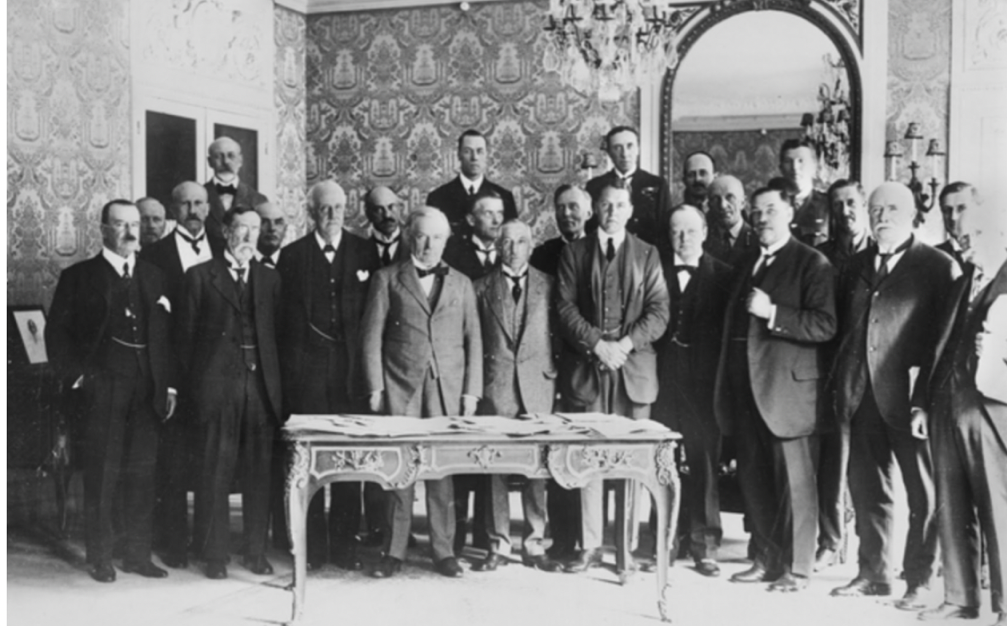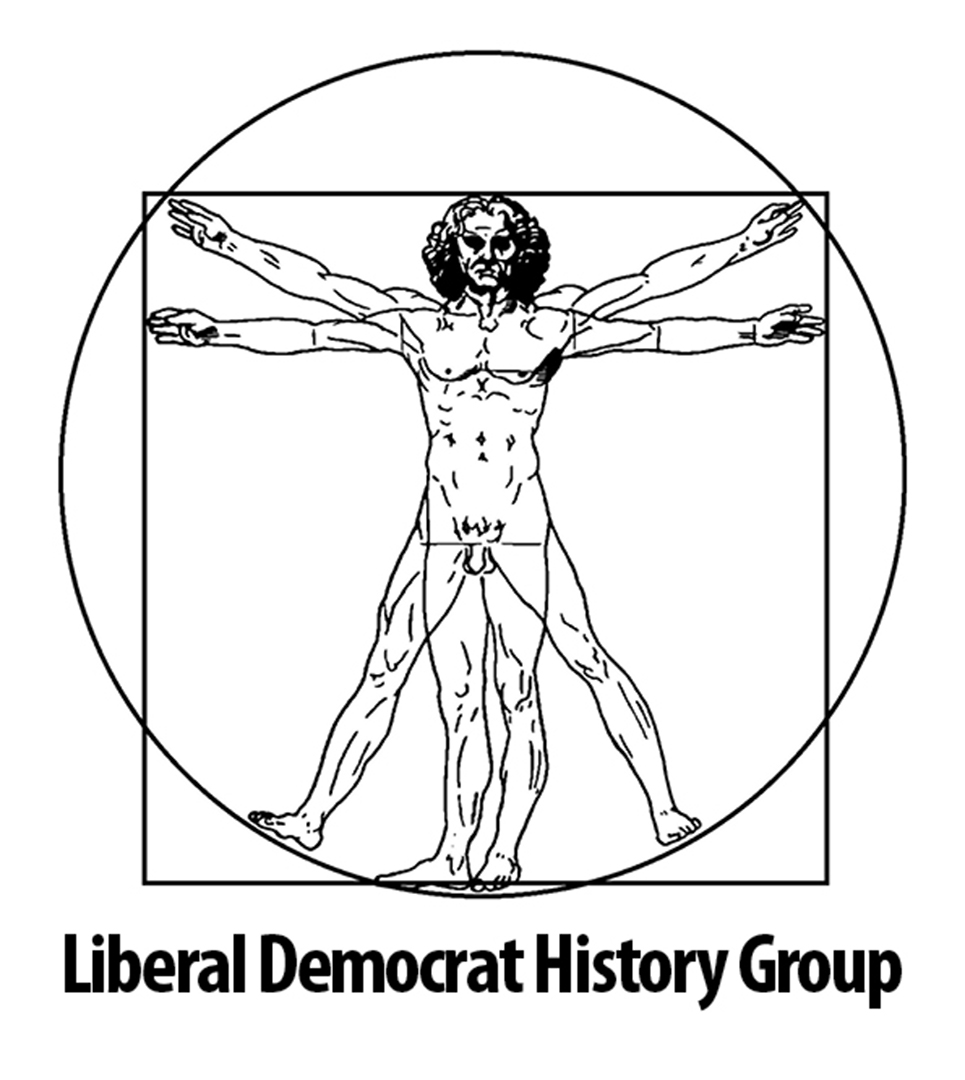Though he never rose to the premiership, John Allsebrook Simon’s collection of the highest offices of state – the Home Office (twice), the Treasury, the Foreign Office and the Woolsack – is unique in twentieth-century history. He played a major role in British politics over more than three decades, while also enjoying a distinguished legal career. The leading barrister of his age, it was said that he had an annual income of up to £50,000 in the year immediately before the First World War. He shared with Winston Churchill the distinction of being the only man who sat in the British Cabinet at the outbreak of both world wars.
Simon’s origins were humble and he owed his political rise above all to his academic distinction. He was born on 28 February 1873 in a terraced house in Moss Side, Manchester, the only son of the Rev. Edwin and Mrs Fanny Simon; his father was a Congregational minister in the Hulme district of the city. Simon was educated at King Edward’s School, Bath, before winning a scholarship to Fettes College, Edinburgh. From there he gained an open scholarship to Wadham College, Oxford in 1892, becoming President of the Oxford Union in 1896. After securing a first in Greats, he won a scholarship to All Souls. Coming down from Oxford at the end of 1898, he was called to the bar at the Inner Temple.
In 1899 Simon married Ethel Mary Venables, a student whom he had met at Oxford. Two daughters were born in 1900 and 1901 but, a few days after the birth of a son in September 1902, Mrs. Simon died. This tragedy had a profound and perhaps permanent effect upon his personality. He became increasingly reserved as his natural shyness intensified, and he sought solace in ever greater attention to his work. In December 1917 he married Kathleen Manning, the widow of a Dublin doctor. This marriage had its problems. Socially rather gauche, Lady Simon suffered from poor health and excessive drinking.
Simon was elected to Parliament for Walthamstow in the Liberal landslide of 1906 and soon rose from the ruck of newly elected hopefuls as a man marked out for early promotion. In 1910, at the remarkably young age of thirty-seven, he became Solicitor-General, with a knighthood, and was promoted to Attorney-General with, unusually, a seat in the Cabinet, in 1913. But Simon always regarded the law as a vehicle to political promotion and, at the formation of the first wartime coalition in May 1915, he turned down Asquith’s offer of the Lord Chancellorship, becoming instead Home Secretary. He resigned in January 1916 over the issue of conscription and was not to hold government office again for a further decade and a half. Up to this point he had been regarded by many as Asquith’s likely successor as Liberal leader.
Simon lost his seat at the coupon general election of 1918, returning to Parliament as member for Spen Valley in the election of 1922. But the internal dissensions and decline of the Liberal Party seemed to preclude further ministerial appointments. His relations with Lloyd George were never easy and his most useful work during the decade was as chairman of the Statutory Commission on India between 1927 and 1930. Simon found his position within the Liberal Party increasingly uncomfortable. On intellectual grounds he was prepared to renounce the Liberal creed of free trade and to consider the possibility of tariffs to ease the country’s economic difficulties.
In 1931 he and a number of fellow Liberal MPs broke away from the mainstream party to form the Liberal National group (known as National Liberals after 1947). Simon was rewarded with appointment as Foreign Secretary in November 1931 in Ramsay MacDonald’s National Government. By common consent he was not successful in this position. His handling of the Manchurian crisis of 1931-33 was particularly criticised, but it was not an easy time to be in charge of the Foreign Office, as the post-war settlement faced its first serious challenges from the aggressor powers, including Hitler’s Germany. Simon seemed unable to make up his mind in relation to key issues. In part this was a tribute to the complexity of his brain, but it was not a strong point in a practising politician.
He was more suited to the Home Office, to which he returned in 1935, and where he played an important backstage part in the management of the abdication crisis. He became Chancellor of the Exchequer in May 1937, where he continued the policy of his predecessor, Neville Chamberlain, in maintaining the strength of the economy as the nation’s fourth arm of defence, even if this meant limiting conventional rearmament. A member of Chamberlain’s inner circle, and widely regarded as one of the guilty men of the appeasement era, Simon was elevated to the upper house as Viscount Simon of Stackpole Elidor at the formation of Churchill’s government in May 1940. There he served with distinction as Lord Chancellor until the end of the war in 1945.
This marked the end of his ministerial career, though he remained hopeful of returning to office as late as 1951. In his final years he became increasingly remote from his fellow Liberal Nationals, whose leadership he had given up in 1940, and he put out feelers to join the Conservative Party. These were firmly rebuffed by Churchill. His uninformative memoirs, Retrospect, appeared in 1952. He died in London on 11 January 1954. A modern biography, Simon was published by David Dutton in 1992.
Simon was one of the most intellectually distinguished politicians of the twentieth century. But he lacked warmth and the common touch. The Liberal Party split of 1931, in which he played a leading part, put paid to any last hopes that the party would recover from the internal divisions which had plagued it since the First World War.

Journal of Liberal History
For the discussion and research of Liberal, Liberal Democrat and SDP history
Developed and hosted by Prater Raines
